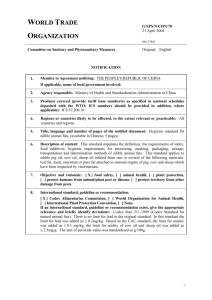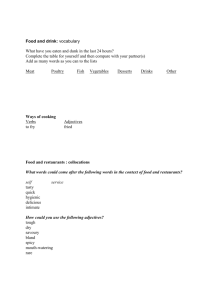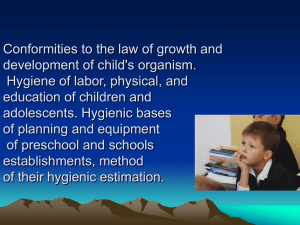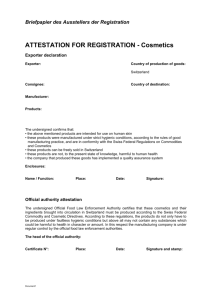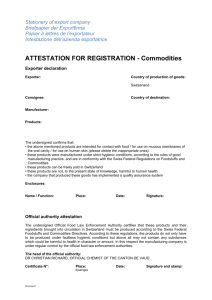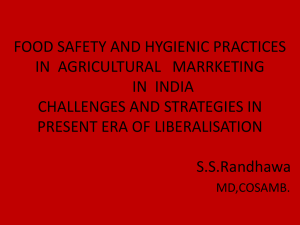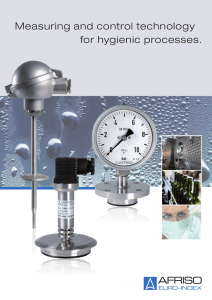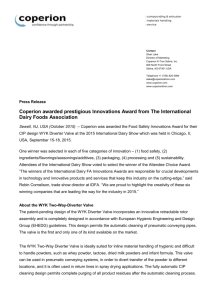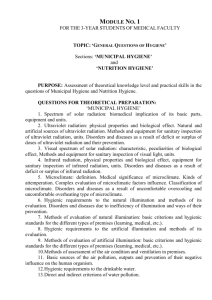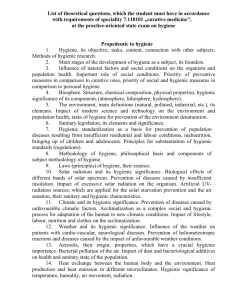642/645 England - Goetze KG Armaturen
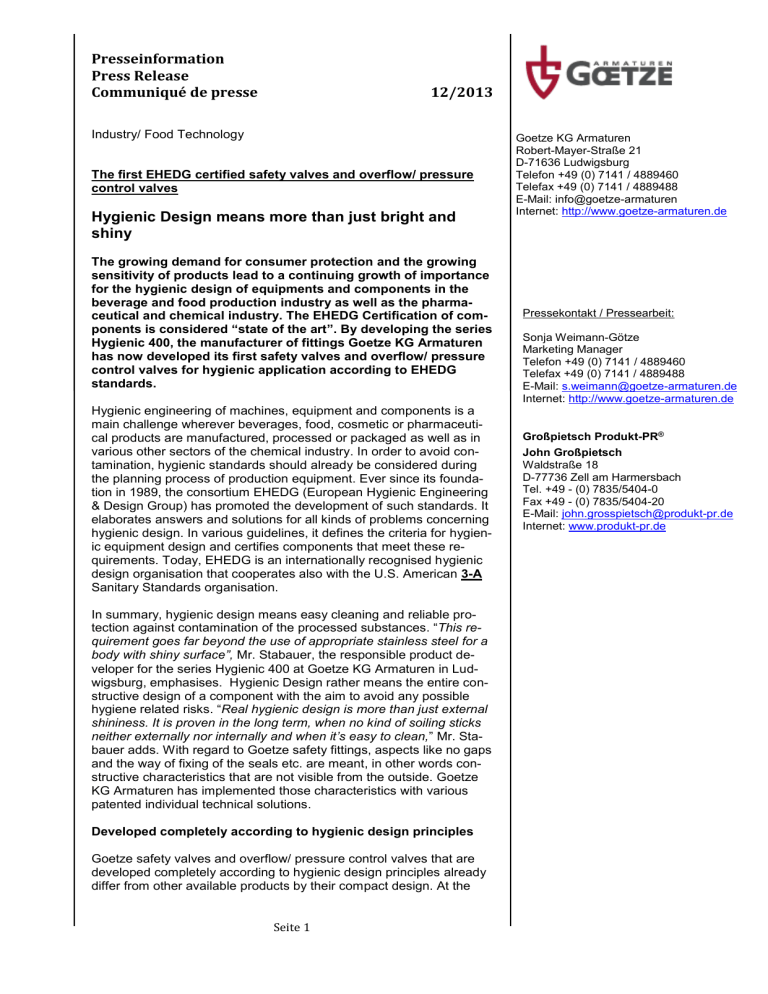
Presseinformation
Press Release
Communiqué de presse 12/2013
Industry/ Food Technology
The first EHEDG certified safety valves and overflow/ pressure control valves
Hygienic Design means more than just bright and shiny
The growing demand for consumer protection and the growing sensitivity of products lead to a continuing growth of importance for the hygienic design of equipments and components in the beverage and food production industry as well as the pharmaceutical and chemical industry. The EHEDG Certification of components is considered “state of the art”. By developing the series
Hygienic 400, the manufacturer of fittings Goetze KG Armaturen has now developed its first safety valves and overflow/ pressure control valves for hygienic application according to EHEDG standards.
Hygienic engineering of machines, equipment and components is a main challenge wherever beverages, food, cosmetic or pharmaceutical products are manufactured, processed or packaged as well as in various other sectors of the chemical industry. In order to avoid contamination, hygienic standards should already be considered during the planning process of production equipment. Ever since its foundation in 1989, the consortium EHEDG (European Hygienic Engineering
& Design Group) has promoted the development of such standards. It elaborates answers and solutions for all kinds of problems concerning hygienic design. In various guidelines, it defines the criteria for hygienic equipment design and certifies components that meet these requirements. Today, EHEDG is an internationally recognised hygienic design organisation that cooperates also with the U.S. American 3-A
Sanitary Standards organisation.
In summary, hygienic design means easy cleaning and reliable protection against contamination of the processed substances. “ This requirement goes far beyond the use of appropriate stainless steel for a body with shiny surface ”, Mr. Stabauer, the responsible product developer for the series Hygienic 400 at Goetze KG Armaturen in Ludwigsburg, emphasises. Hygienic Design rather means the entire constructive design of a component with the aim to avoid any possible hygiene related risks. “ Real hygienic design is more than just external shininess. It is proven in the long term, when no kind of soiling sticks neither externally nor internally and when it’s easy to clean, ” Mr. Stabauer adds. With regard to Goetze safety fittings, aspects like no gaps and the way of fixing of the seals etc. are meant, in other words constructive characteristics that are not visible from the outside. Goetze
KG Armaturen has implemented those characteristics with various patented individual technical solutions.
Developed completely according to hygienic design principles
Goetze safety valves and overflow/ pressure control valves that are developed completely according to hygienic design principles already differ from other available products by their compact design. At the
Goetze KG Armaturen
Robert-MayerStraße 21
D-71636 Ludwigsburg
Telefon +49 (0) 7141 / 4889460
Telefax +49 (0) 7141 / 4889488
E-Mail: info@goetze-armaturen
Internet: http://www.goetze-armaturen.de
Pressekontakt / Pressearbeit:
Sonja Weimann-
Götze
Marketing Manager
Telefon +49 (0) 7141 / 4889460
Telefax +49 (0) 7141 / 4889488
E-Mail: s.weimann@goetze-armaturen.de
Internet: http://www.goetze-armaturen.de
Großpietsch Produkt-PR ®
John Großpietsch
Waldstraße 18
D-77736 Zell am Harmersbach
Tel. +49 - (0) 7835/5404-0
Fax +49 - (0) 7835/5404-20
E-Mail: john.grosspietsch@produkt-pr.de
Internet: www.produkt-pr.de
Seite 1
Presseinformation
Press Release
Communiqué de presse
same nominal diameter and capacity, they are only about half their size and therefore allow much more flexibility when implementing in plants. Their body, the internal parts, the spring etc. consist of appropriate stainless steel materials. Difficult to clean components in the guide, the spring housing and the spindle/disc combination are protected against soiling by stainless steel bellows. All safety fittings of this series have a smooth, faultless surface finish optimised for the cleaning process. The surface roughness is Ra <0,8 µm. As an option,
Goetze can supply the fittings mechanically polished and/or electropolished. Furthermore, the shape of the valve bodies are designed in the way that forming of puddles is avoided in the safety valve or the overflow/pressure control valve after it has opened. By lifting the disc from the seat, there is the possibility to carry-out CIP/SIP.
Quality in detail
A unique feature of the overflow/ pressure control valves – as an option to the set and sealed versions – is the possibility to adjust the set pressure by hand wheel, without the media entering into the atmosphere. Here again, quality and hygienic design show in detail: The hand wheel is protected against incorrect turning and it is easier to clean than conventional adjustment methods.
One of the major quality characteristics of such safety fittings are minimal dead space and no gaps in the inlet area of the valve. Goetze
Hygienic 400 safety fittings are characterised by h/d
0
<1, 5. (h= dimension between valve connection and valve seat in mm; d
0
= smallest flow diameter at the valve seat in mm). Also relevant are features like fixing as gap-free as possible of all elastomer components, as well as exposed and rinsed o-ring seals. Goetze uses elastomer moulded seals that meet the requirements of FDA, USP, 3-A, ADI-Free.
By the way:
Hygienic design is not a luxury item in an affluent society, but was made mandatory a long time ago. The legal basis is the Equipment and Product Safety Act (Geräte- und Produktsicherheitsgesetz
GPSG), in particular the regulation no. 9 that corresponds to the European Machinery Directive (2006/42/EC). It is based on the standards DIN EN ISO 14159 und DIN EN 1672-2 and is not only compulsory for the food industry but also for the manufacturing of pharmaceutical and cosmetic products.
Words 802
Characters 4.447
Characters (incl. spaces) 5.243
Seite 2
